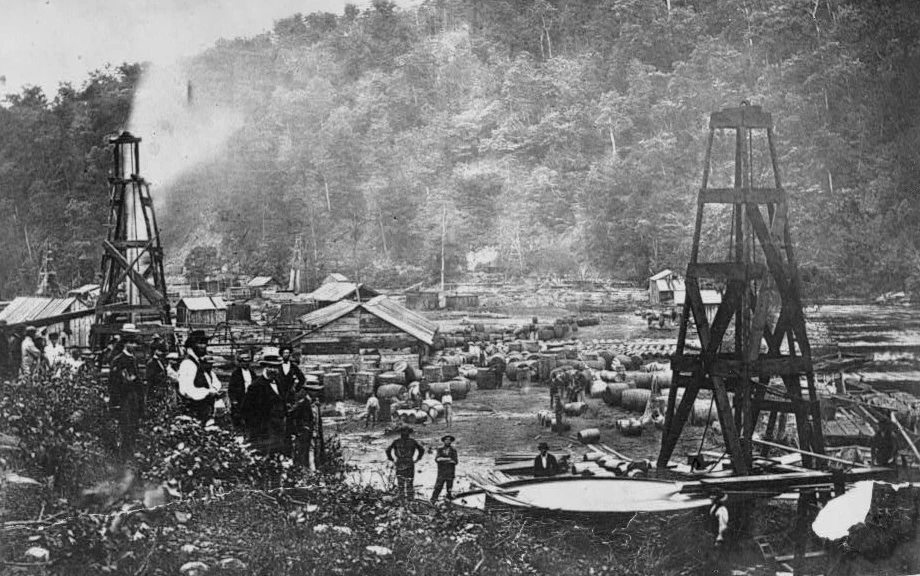TL;DR: In the spring of 1867, a remarkable event unfolded in the hills of northwestern Pennsylvania, just a few miles from Titusville—the birthplace of the oil industry. On lands owned by the Drake Petroleum Company, what began as a routine drilling operation turned into an explosive demonstration of natural gas power. The well spouted salt water, roared like a locomotive, and unleashed a pressure strong enough to lift a man bodily into the air. Reports like this remind us how raw and unpredictable the early oil region could be.
A Gas Well
The Titusville Morning Herald, May 6, 1867
About six miles from Titusville, on a tributary to Caldwell Creek, are the lands of the Drake Petroleum Company. The manager, Mr. Charles F. Dodge, has put down several wells upon this property, but without getting oil in paying quantities. The last one promised so well that a Roberts Torpedo was put in it, since which the well has been spouting salt water and blowing gas in a most extraordinary manner. Our informant pronounces it a phenomenon never before witnessed in the oil region. The roar is compared to the blowing off of a safety valve of a locomotive; the force of the gas blew the last one hundred and twenty feet of the sucker-rods out of the well; but the final test of its force was the placing of a board on the top of the tubing upon which a man weighing one hundred and sixty pounds sat down, and the gas lifted his weight, showing a pressure of over sixty pounds to the square inch—sufficient to run a twenty-horsepower engine.
A joint was connected with the tubing, taking about half the gas, which was then lighted and sent up a flame of twenty-five feet. Old operators think there must be something behind this salt water and gas, and that the well is upon or near the oil belt, running from Dennis Run to Church Run.

